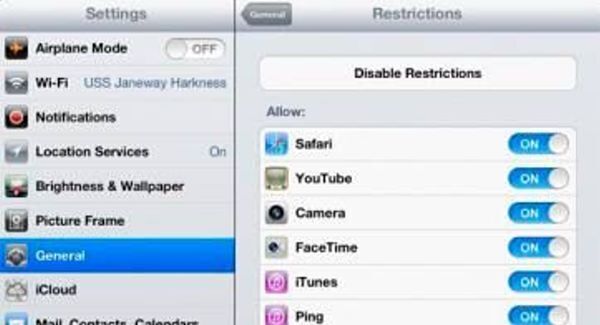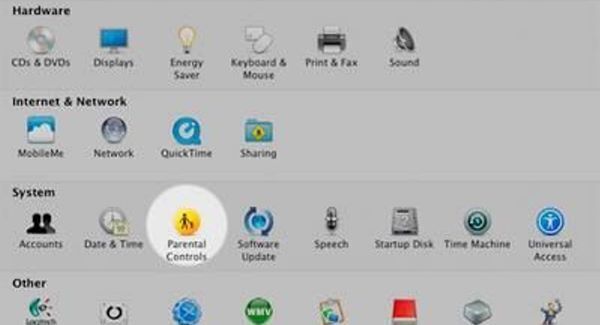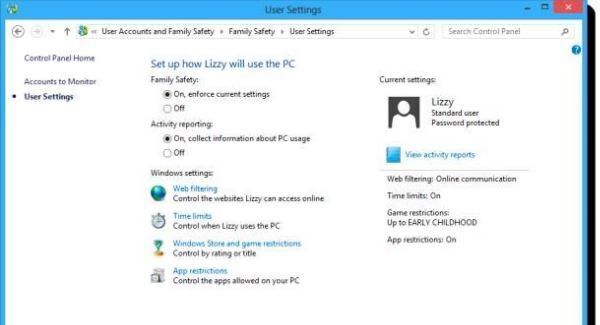Keeping them safe online: a step-by-step guide to parental controls

Simon Grehan is webwise project c-ordinator with the National Centre for Technology in Education. “We’re getting a lot of phone calls from parents whose kids got internet devices for Christmas. Now, all of a sudden, they’re worrying about the other side of it... They’ve all got tablets and now they’re seeing that there’s been porn on them.”
The problem for parents has been exacerbated by the rapid increase in the number of internet-enabled devices in the home. The experts told us to put the computer in the kitchen, where we could regulate it. Now, along with the computer in the kitchen, there are a couple of laptops, three or four smartphones, and several tablets.
Thanks to pressure from its prime minister, David Cameron, the UK has introduced ‘network level filtering’, by which the internet service provider, at your instigation, cuts off access to adult content. Despite pressure from the children’s rights groups, Communications Minister Pat Rabbitte has said that he has no plans to ask internet companies like Eircom and UPC to do the same here.
What can parents do? In his own home, Mr Grehan has a device that filters adult content at the router, the little box which the ISP (internet service provider) installs to deliver broadband into the home. Unfortunately, it’s an option that’s only open to parents who are also tech experts.
“The onus on parents is either to install some software on all the different devices in their house, and/or configure each device for all the different people that use those devices. There isn’t really any other alternative.”
The good news is that most of the devices which your children use to access the internet are configurable. In other words, it is possible to get into the computer’s or tablet’s settings and specify who can access what. You can switch off the internet altogether, if you want, or limit access to the browser, which is the application that accesses the net. See the panel on the right for more detail on this.
In addition to configuring each device, you can also download software designed to prevent access to adult content on the web. Parental-control products like Puresight Owl, Net Nanny and Trend Micro Online Guardian, offer a belt-and-braces approach to preventing children from seeing things they shouldn’t see and doing things they shouldn’t do.
They are far from perfect, however. “The software works better on PCs than on tablets,” says Mr Grehan, “but even on PCs, it’s not very effective. The most you can hope for, in filtering technology, is to stop children coming across porn by accident.”
If a teenager is determined to find porn, says Mr Grehan, he will find it.
“Just Google how to get around a porn filter. It’s not simple, but if someone is determined, they will get around it.”
Mr Grehan emphasises that there’s no product out there that will allow you to switch off your responsibility as a parent. “The best thing the parent can do is get involved, talk to their kids regularly about it, have those slightly embarrassing discussions about pornography and why you don’t want them using it, and, also, agree basic housekeeping rules about what time the internet goes off at.”
Though it might be possible to configure the device to prevent younger children from stumbling onto adult content, that doesn’t mean you set it up, hand it back and walk away. “If you leave a child to their own devices on a tablet, they’ll spend their life looking at sneezing cats and people falling down stairs, but if you show them how to do things that are useful and interesting, they’ll get much more out of it,” Mr Grehan says. You can get information online about the best apps for children, and which sites manage to be both fun and educational.
“You are going to have rules about use of the internet, but the more time you spend showing them how to use it properly, the safer they’ll be,” he says.
Go to ‘Settings’ and from there, hit the ‘General’ tab. Scroll down towards the end of the screen, where you’ll find the ‘Restrictions’ tab. The first time you access this, you’ll be prompted to set a four digit pin, which you’ll then use to enter this section thereafter. In ‘Restrictions’ there’s a list of things to turn on/off, including access to the iTunes store, the web browser, Safari and in particular ‘In App Purchases’. There are many reports of children racking up hundreds of euro of inadvertent purchases within ‘free’ apps, so make sure this is turned off. You can also set privacy settings in ‘Restrictions’, and control access to adult content.

Again, accessing parental controls depends on the version of Android which the tablet is running. In versions 4.2 and later – which should cover most of the tablets received this Christmas – you can set up multiple user accounts, then configure each child’s account individually.
Access ‘Settings’ from the home screen then tap ‘Add user or profile’. Now tap ‘Restricted profile’. Similar to an iPad, the first time you come here, you’ll be prompted to set a screen lock for the tablet, which will be either a pattern, a PIN or password lock.
Now tap the ‘Settings’ icon to name the new profile after the child in question. You’ll then be presented with the full list of apps on the device. All are switched off by default. Simply turn on the ones you want your child to use.
To turn off ‘In App Purchases’ – and thereby prevent kids buying things accidentally on purpose – you’ll need to go to the Google Play Store app, open the ‘Settings’ menu and scroll down to ‘User controls’. Tick ‘password’. This means if anyone tries to buy anything at the store, they will first have to enter your password.
And just to make sure no one tries to buy anything anywhere else, go back to the ‘Settings’ menu, scroll down to ‘Security’ and disallow the installation of apps from other sources. You’ll also find ‘Content filtering’ in ‘User Controls’ within the ‘Settings’ menu. Here you can say what types of apps may be downloaded, depending on their content.
Click ‘System Preferences’, then ‘Accounts’. Here you can set up accounts for yourself and your children. Your own account will have overall password-protected control of the computer. In each child’s account, click on ‘Parental Controls’. This is where you specify how each child uses the computer. You can say who they email and what programmes they access. You can also restrict their use of the Mac’s browser, Safari.

Configuring the parental controls on your PC will vary depending on the operating system. When you log in to Windows 8, you automatically get access to a remote management feature at Microsoft’s family safety website. To monitor a child’s account, click on the Family Safety box which you’ll find at the end of the Add User wizard. Once that’s done, you’re redirected to the computer’s control panel where you can control exactly who gets to see what and monitor what they’re doing online.

*










